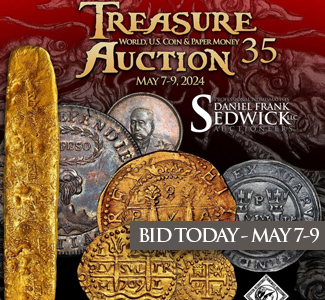By Gilles Bransbourg for American Numismatic Society (ANS) ……
The Franc is one of the oldest and most widespread currency units in the world, currently the official currency of 25 states or autonomous territories. However, the Franc was never intended to become the name of a currency until the French kingdom issued a specific gold piece to gather the massive ransom needed to free King John II “the Good”, prisoner of the English since the disastrous Battle of Poitiers in 1356. He was depicted in full armor on a horse, with the legend Johannes Dei Gracia Francoru(m) Rex. From “Francoru(m)” came “Franc”. This famed coin is called the Franc à cheval (1905.57.35 and 1966.163.48).
Born in a 14th-century disaster, the Franc carries another unusual quality: it derives its name from the name of the people and nation who minted it. To this day, the Afghani and the Boliviano are the only other eponymous currencies, possibly with the Euro. “Franc” probably derived from old Germanic, meaning “spear”, or possibly “bold”, then came to designate a confederacy of tribes who put pressure on the Roman Empire’s northeastern border. Once they settled in Gaul in the 5th century, the word “Francia”, later “France”, came to name the country inhabited by the Franks. It then accrued the wider meaning of “free person” as well as straightforwardness, hence “franchise”, “enfranchised” or “frank” in English, since the kingdom’s laws forbade slavery on its soil. This is how, much later, Sally Hemmings, a black slave owned by Thomas Jefferson and mother to his children, became technically a free woman during her stay in Paris, until Jefferson convinced her to return to the US.
The Franc’s bigger history takes off with the French Revolution. On April 7 and August 15, 1795, in the midst of the assignats crisis (0000.999.56432), as disorderly deficits and money printing had led to rampant inflation and monetary dislocation, the French Parliament created a Republican currency defined by 4.5 g of pure silver, the Franc, and decimalization was implemented at the same time, inspired by the newly established United States monetary system.
The famous 5-Franc coin, (1911.105.844) conceived by Augustin Dupré with Hercules holding liberty and equality, would inspire later French coinage design. Dupré is the same engraver who had created the 1783 Libertas Americana medal, commissioned by Benjamin Franklin (1964.67.1), which in turn inspired the Large Cent design (1977.203.1 and 1948.143.81).
With the wars of the Revolution and Napoleonic period in the later 18th and early 19th century, the Franc was by then poised to expand its influence, as seen by the following examples:
After Napoleon’s final defeat, the Franc withdrew back to France, mirroring the country’s troubled political history—three more revolutions, five Republics, two monarchies, one empire, the collaborationist state between 1940 and 1944, and a few coups d’Eta (1957.117.9, 1957.172.2000, 1929.77.29, 1897.28.7, 1946.71.5, 1992.117.4974–5).
During this period, the Franc initiated a second period of geographic diversification as the second French colonial empire expanded across Africa, South-East Asia, and the Pacific.
Obviously, most of these pieces reflect the sense of European superiority that sustained the colonial project, highlighting the civilizing mission France was supposedly undertaking in its overseas territories. At about the same time, the Latin Monetary Union, an attempt at anchoring a wide range of currencies to the same gold standard, led to the Franc being used as a parallel currency unit in unexpected European countries like the Austro-Hungarian monarchy, or the kingdoms of Denmark and Sweden.
In the wake of World War I, the end of gold convertibility, the great inflation of the 1920s, the Great Depression, and then World War II, the Franc sustained multiple debasements. What had been a gold or a silver coin had become a worthless piece of base metal by the ’50s, until Charles de Gaulle reformed the Franc in 1958.
In the 1970s, after the collapse of the dollar-gold exchange standard, silver was abandoned and coins went back to their fiduciary character (1983.121.1).
The weirdest part of the Franc’s long history is that it has become an orphan: used today in Africa and the Pacific mostly, its mother country has abandoned it to merge into the Eurozone.
Switzerland and Lichtenstein are now the last European countries using a Franc (0000.999.53004 and 1977.158.1414), while the Franc thrives, far away from the kings who created it (1905.57.35).
* * *
Originally Published on the ANS Pocket Change Blog

A beautifully written and illustrated article about a
” coin ” that mightily contributed to the path of my life. Thank You !!
Historical trivia: Several pieces from the immediate post-1789 and Napoleonic periods (items 1911.105.844 and following) are dated using the Revolutionary calendar. As part of the planned total remake of French society, the new calendar (of course!) began with the Revolution. E.g. item 1920.147.329 which is dated “An 9″ (Year 9, in French) was struck in the 9th year of the Revolutionary period: (1789 + 9 – 1), or 1797.
Fortunately the Revolutionary calendar never caught on.
I thought this article was very interesting and well written. I had long wondered what year the former French colonies who used a Franc as their currency switched coins from silver to a base metal; thanks for the info